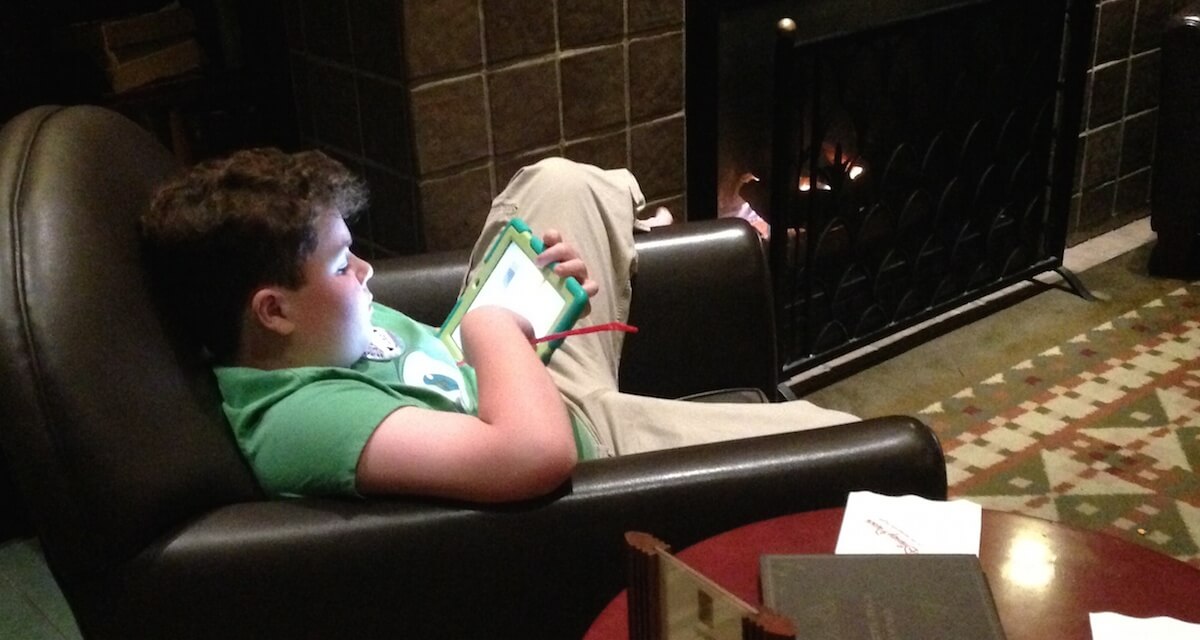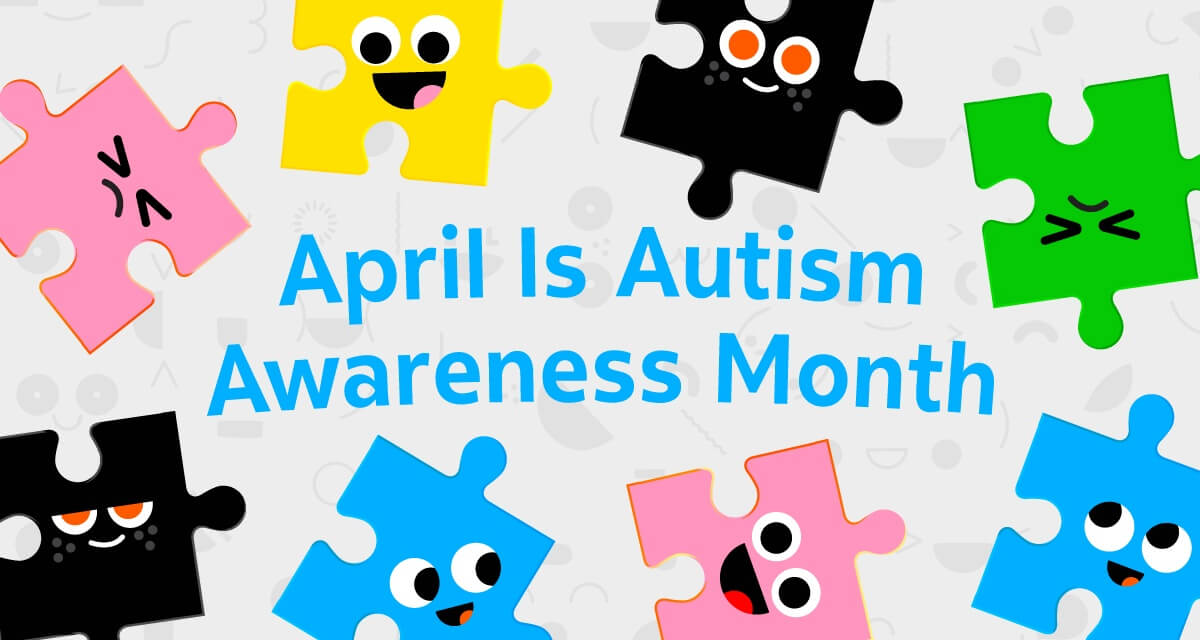The transformative impact that mobile technology has had on thousands of families is nothing short of remarkable.
- By
- Parker Barry
On a sunny afternoon in Houston, the hallway fills with parents, grandparents and babysitters glancing at their watches and waiting patiently. Suddenly the big glass door opens and one by one, young children emerge with lunch boxes, backpacks and plastic bags. Some are chattering away, a few reach for their parent’s hand, and others begin roughhousing with their siblings.
 One young boy with light brown hair and beautiful green eyes walks out smiling and plops down into a chair. He is wearing what appears to be a lime green messenger bag slung across his shoulder. With a brief glance up at his mother, he quickly moves the green bag onto his lap, bends his head in concentration and begins to tap the front of it with his finger. The word “park” is spoken aloud, not by the boy, but by the digitized voice coming from the iPad he grasps in his small hands. He eagerly holds it up to his mother, and she smiles excitedly, affirming his request by saying, “So you want to go to the park?” His smile grows as he stands up and begins to walk toward the door with a spring in his step.
One young boy with light brown hair and beautiful green eyes walks out smiling and plops down into a chair. He is wearing what appears to be a lime green messenger bag slung across his shoulder. With a brief glance up at his mother, he quickly moves the green bag onto his lap, bends his head in concentration and begins to tap the front of it with his finger. The word “park” is spoken aloud, not by the boy, but by the digitized voice coming from the iPad he grasps in his small hands. He eagerly holds it up to his mother, and she smiles excitedly, affirming his request by saying, “So you want to go to the park?” His smile grows as he stands up and begins to walk toward the door with a spring in his step.
Similar scenes are played out thousands of times each day by children across the country who bound out of school with their parents and caregivers to begin the second part of their day. The difference is that the boy described above — 9-year-old Richard — happens to be nonverbal.
“He was completely closed off to the world”
Several years ago, this interaction would have played out quite differently for Richard, and it would have been characterized by a lengthy and frustrating guessing game as to what he was trying to tell his mom. Richard’s parents, Laurel and Mark, describe it this way: “Prior to our finding the iPad, we had no real way of knowing what Richard wanted or needed. He was completely closed off to us and to the rest of the world.”
Richard was born in 2007 with cognitive delays resulting from Down syndrome, autism and a seizure disorder. He struggles with other chronic health challenges that do not affect him cognitively, but “have physical ramifications that play into his day-to-day life,” Laurel says. In spite of his disabilities, he maintains an enthusiastic approach to life and transfers that enthusiasm to everyone with whom he comes into contact.
Richard uses an app on his iPad mini called Proloquo2Go that works as an alternate way to communicate by displaying pictures with labels that replace speech. Each picture paired with text “speaks” the word for Richard when touched. The app is continuously customized for him by his speech therapist, Betsy, in collaboration with Mark and Laurel, based on his language development and most frequently used words and phrases, such as “I want,” “yogurt,” “elevator” and “park.” Like other apps for augmentative and alternative communication, or AAC, Proloquo2Go offers a range of child and adult voices from which to choose. Children feel empowered by choosing the voice, since the voice will speak for them and become their voice. Recently Richard changed his voice to Josh, an American English speaking male child voice to “more accurately reflect his age and stage in life,” explains Mark.
Screen time = a lifeline
Like Richard, many children who cannot speak due to disability, injury or genetic condition often possess receptive language — the ability to understand what is said to them — but lack the ability to express what they want to say. While touch-based technology has existed for decades, the recent surge in affordable consumer products like smartphones and tablets has benefited children with disabilities and chronic illness like Richard, and their families, in many unexpected ways. While hot-button issues involving mobile technology and amounts of screen time play out in the media among parents and child development experts, countless families consider access to screen time for their children (and themselves) as a lifeline.
“We could not be the parents we want to be for Richard without this technology and the independence it affords him,” Mark explains. “We no longer have to wonder what our son wants or needs. He is able to tell us, and he does so emphatically! As he has gained experience using the technology, his sense of humor, which was essentially hidden for the first five years of life, has also begun to emerge. As it turns out, he is a mischievous little rascal!”

Mobile devices can be a supportive tool for patients
The transformative impact that mobile technology has had on thousands of families like Richard’s in recent years is nothing short of remarkable. Not only can applications paired with a handheld device assist with communication for a child who cannot speak, but it can also fill a critical need for a family who is caring for one of the 11.2 million children living with chronic illness or disability in the U.S. These families struggle with information overload, unfamiliar medical terminology, the disruption and isolation of chronic illness, and regular hospitalizations. Long-term hospital stays can be especially devastating for children, whose social lives usually revolve around school.
The transformative impact that mobile technology has had on thousands of families like Richard’s in recent years is nothing short of remarkable.
With affordable mobile technology at one’s fingertips, however, managing complex medical conditions, receiving support from loved ones, and even staying connected with school during hospital stays can be more manageable. BridgingApps, a program of Easter Seals Greater Houston that focuses on using mobile devices with people who have disabilities, has witnessed the sharp rise in mobile device use in recent years, noting that 77 percent of adults currently own a smartphone. Because the devices are easy to use, portable and widely available, BridgingApps, in collaboration with Texas Children’s Hospital, has developed a curriculum for hospitals to teach patients and families self-sufficiency using mobile devices as a supportive tool during a hospital stay and after discharge. In a hospital setting, a Digital Trainer conducts short teaching sessions with families in collaboration with a patient’s health care team that includes patient education, health information management, organization tools and strategies for following discharge recommendations.
Even the youngest patients are empowered
When utilized by patients and their families who are experiencing long-term health related issues, mobile technology becomes an efficient solution for addressing the diverse special needs of families. Accessing a patient portal, using a scanner app instead of paying a service to fax documents, creating a simple communication board and videotaping therapy sessions are some examples of how families can benefit from the immediacy of a smartphone or tablet. Learning how to leverage the power of mobile technology to cope with the challenges of disability and chronic illness empowers families — and even the youngest patient — to be a part of their health care team and can be life changing. For anyone who has played phone tag with doctors, driven across town to use a fax machine, played a guessing game with someone nonverbal due to illness or injury, or tried keeping up with immunization records for routine physicians visits — mobile tech can be a sanity saver.
What kinds of apps do families find helpful? Free apps like Caresync, Skype, CaringBridge and MyChart offer powerful solutions already in one’s pocket to access much-needed support and information that can provide relief for the emotional ups and downs of caring for a medically fragile child. Laurel agrees: “Because of the variety and seriousness of many of Richard’s medical conditions, having the ability through MyChart to link these conditions and their treatments to all of his various doctors has been critical.”
After several years of practice, Richard is learning to communicate with his family and caregivers about what he would like to do, what he would like to eat and even with whom he would like to do these activities. The sense of autonomy that this technology affords Richard has been dramatic. His frustration level when it comes to articulating his thoughts has diminished significantly, and the resulting joy that is at the core of his personality takes center stage with more regularity. No longer are his day-to-day needs “trapped inside his own head,” Laurel enthuses.
 Richard’s extended family and friends celebrate the transformation that technology has made in his life. They are impressed by “what’s going on in his brain,” now that he can express it using technology. The only barriers are in other people’s unfamiliarity or lack of proficiency in using the technology themselves, but generally speaking, people are very patient with Richard in settings when he is using technology to communicate.
Richard’s extended family and friends celebrate the transformation that technology has made in his life. They are impressed by “what’s going on in his brain,” now that he can express it using technology. The only barriers are in other people’s unfamiliarity or lack of proficiency in using the technology themselves, but generally speaking, people are very patient with Richard in settings when he is using technology to communicate.
Cristen Carson Reat is the co-founder and program director of BridgingApps, a program of Easter Seals Greater Houston. Cristen holds a M.A. degree from the University of Texas at Austin, graduated from the Defense Language Institute in Monterey, California, and is certified through the Assistive Technology Applications Program at California State University. She is the mother of two sons, one of whom has Down syndrome. Cristen is a founding member of Toca Boca’s diversity advisory board.



